Workshops and Intensives
As part of my teaching practice and my interest in commoning pedagogy, I run workshops that aim to transform the cohort of new spatial design students into a community and structure the transition to a tertiary learning environment. Commoning pedagogy involves designing projects that, from beginning to end, facilitate the creation of an extended community. This approach is outlined in more detail here: Hamilton, O. (2019). Commoning Interior Design Pedagogy Interiors, 9, 1 - 18 and was recognised by the Vice-Chancellor's Award for Strategic Contributions to Learning and Teaching: Initiatives that Exemplify RMIT’s Commitment to Student Belonging in 2020. (info here - but requires RMIT log in)
The creative design briefs and projects undertaken in the workshops are focused on instigating collective and creative activity rather than delivering a set of skills or seeking a prescribed outcome. The projects in the workshops are sequenced to develop the student’s skills, comfort with each other, and willingness to offer up ideas, explore processes and engage in more challenging aspects.
The projects pictured below are student work produced in the first 3 weeks of university within the in-class workshops in response to prompts or briefs exploring spatially dynamic words, spatial relations, and sensorial experience of space. The short 3-hour workshops are designed to get students working experimentally, collectively, iteratively and as the workshops pictured are in weeks 1 and 2 of their first year of study, more comfortable showing work in progress, unfinished work, and giving and getting ideas in groups.
In 2020 with COVID and lockdowns I developed how to deliver hands-on workshops online for students and translated this experience across to organizations through participating in a team made up of other members of the RMIT Wearable and Sensing Network for a workshop to QUT for a future Health Precinct on campus. The paper was presented at IASDR 2021 here
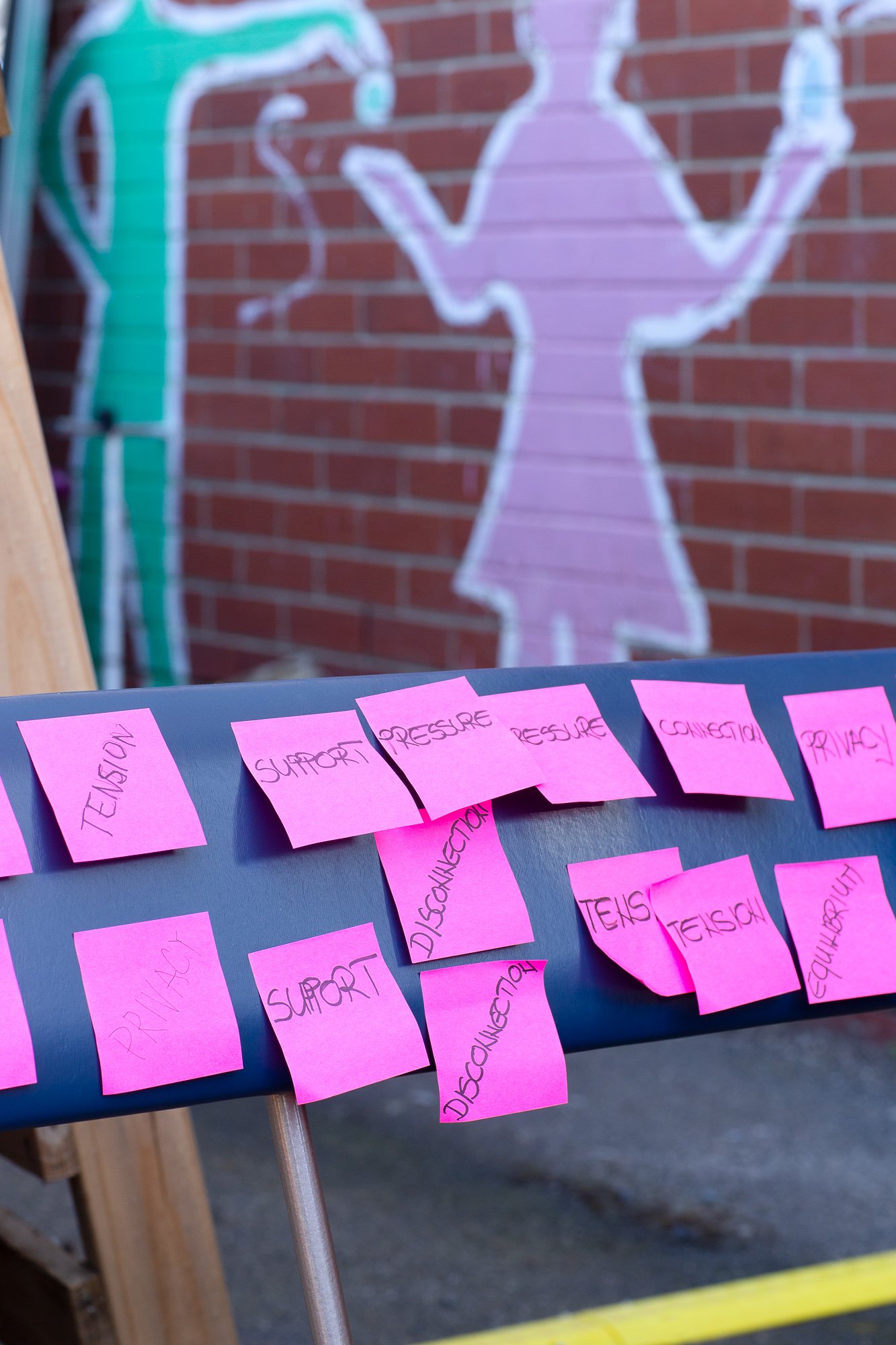
prompts for Everyday Choreography
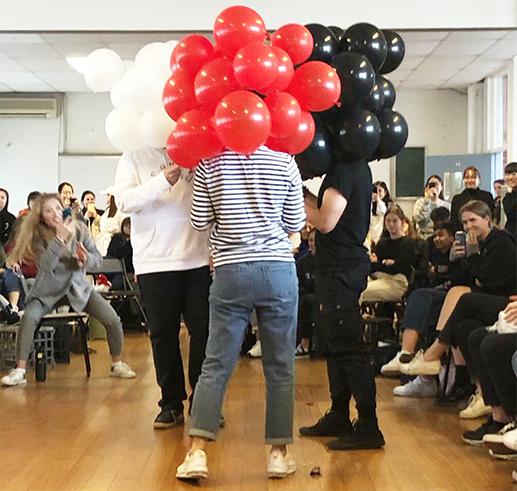
Everyday Choreography - performance week 2
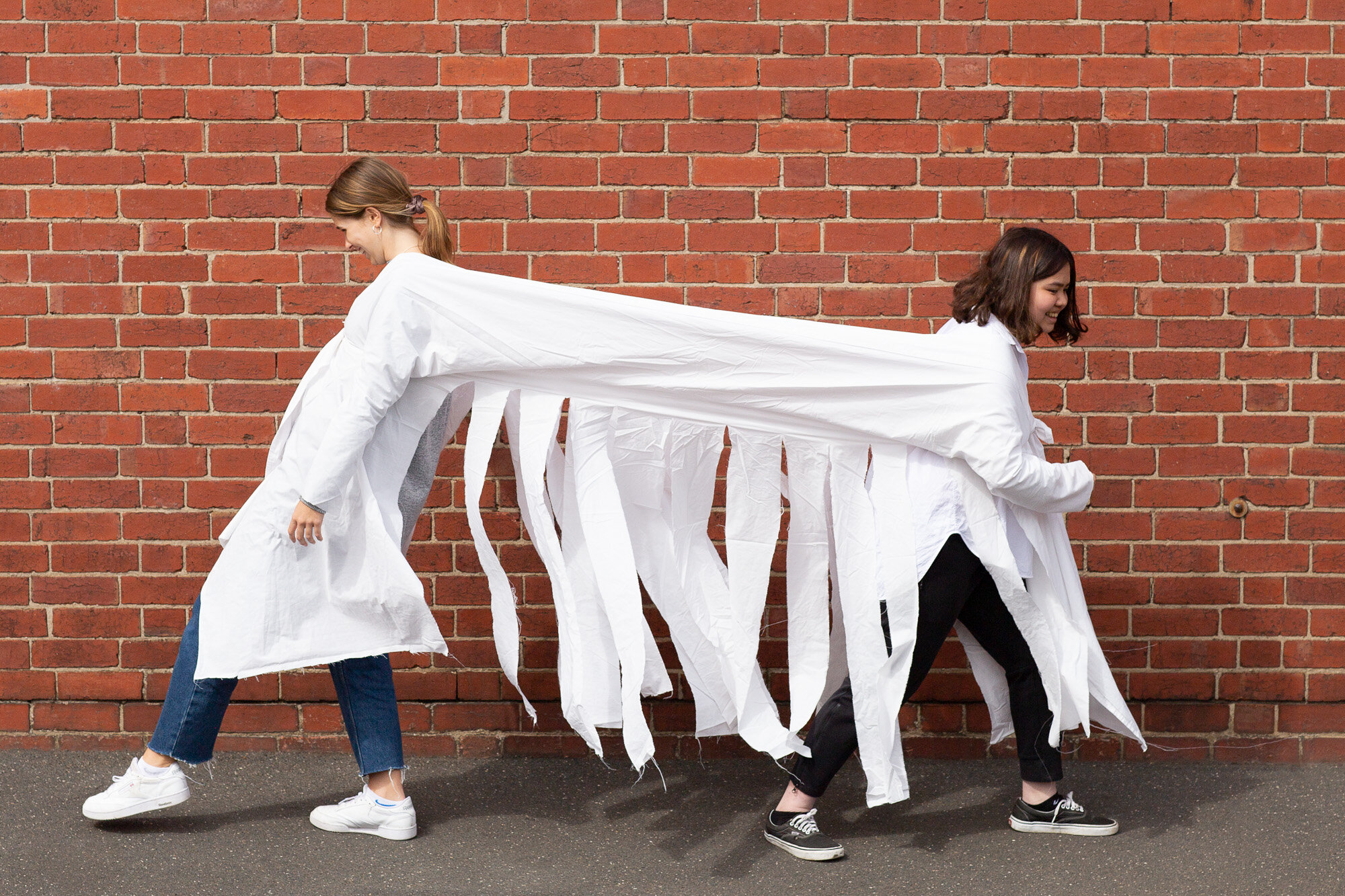
Everyday Choreography- Abigail Ng and Jemima Padley - week 2
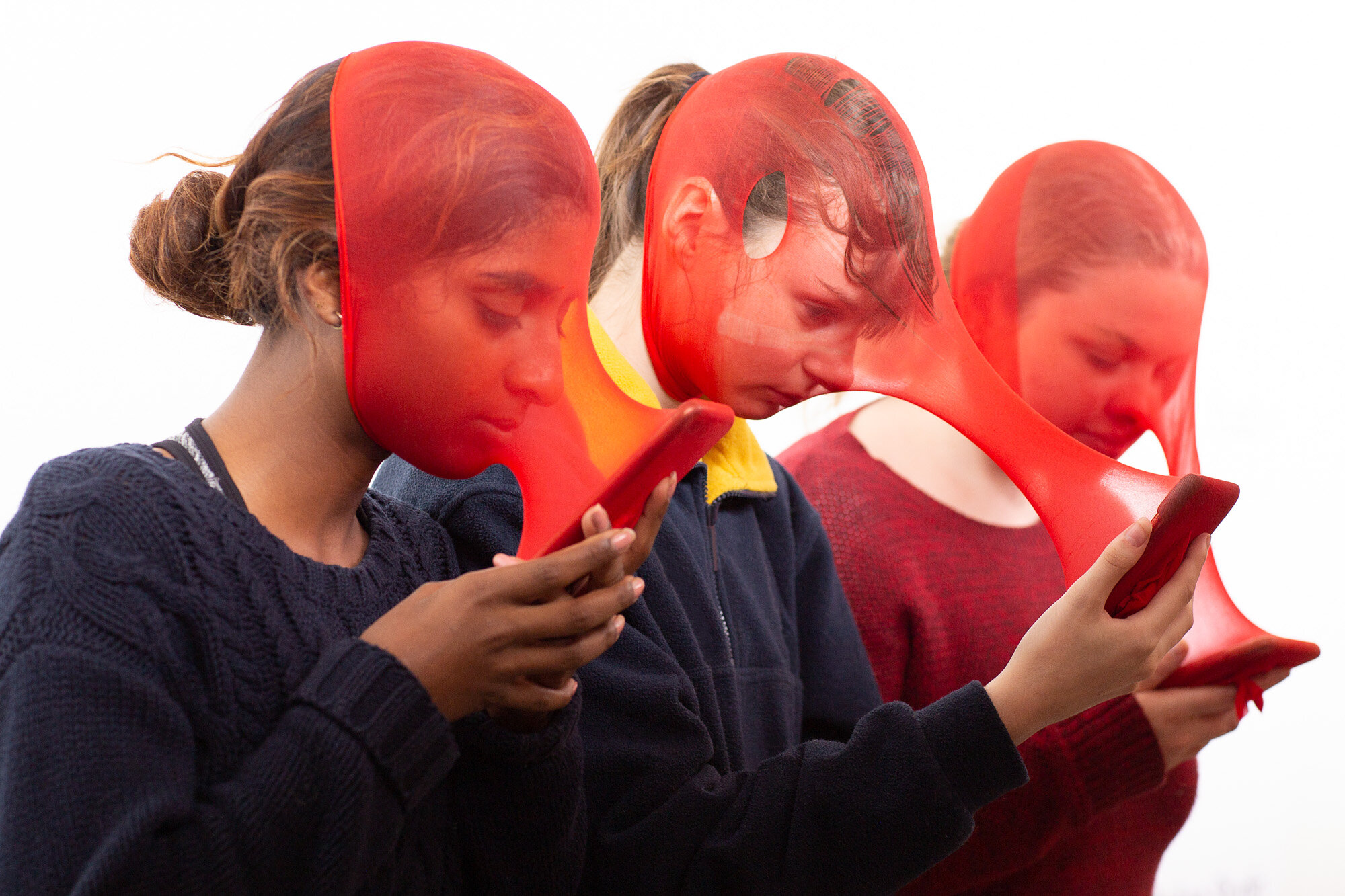
Everyday Choreography- Marion Perrera, Mia Griffith, Kali Appleby and Baihui Luo - week 2

Everyday Choreography- performance week 2
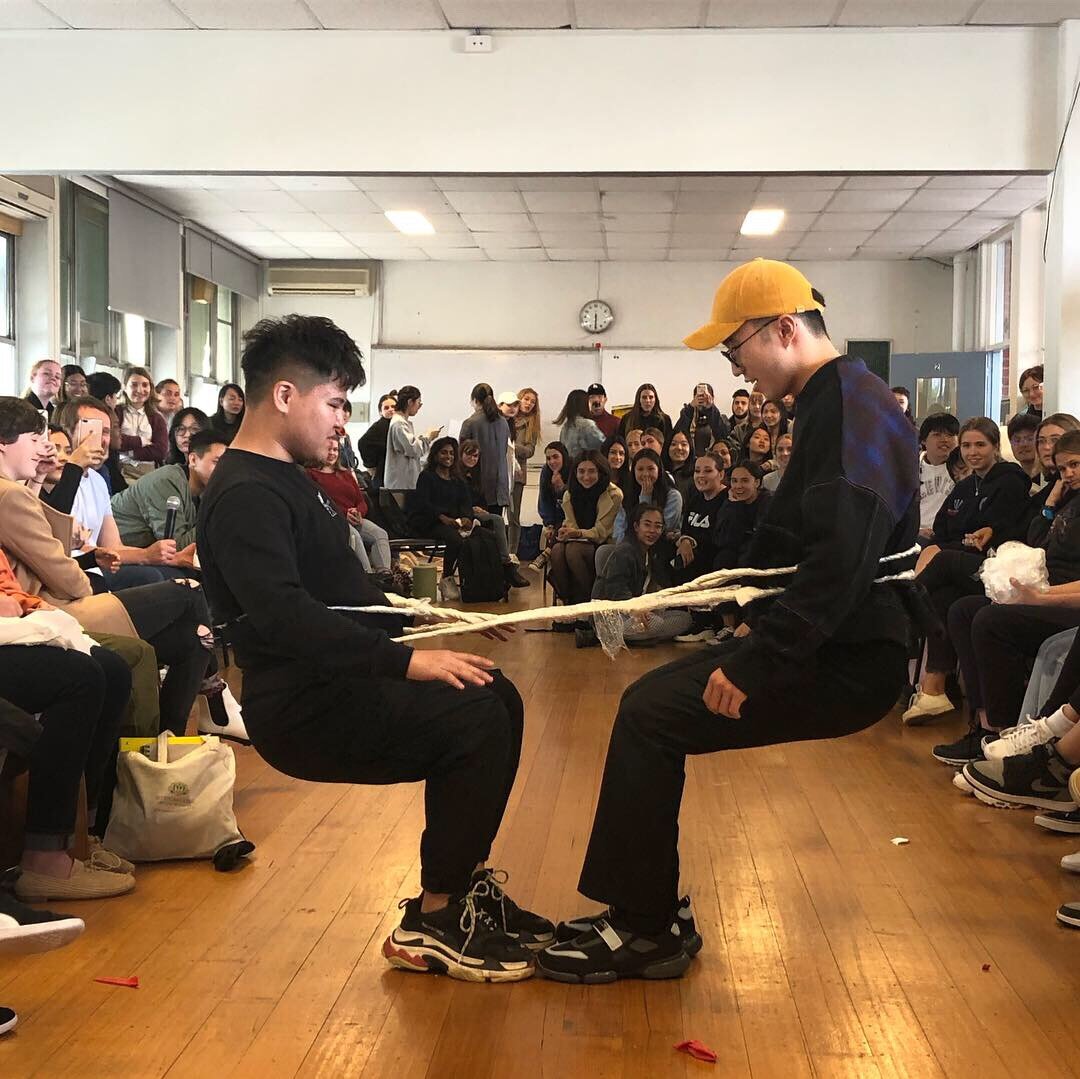
Everyday Choreography - Zichao Xu and Jifeng Shi
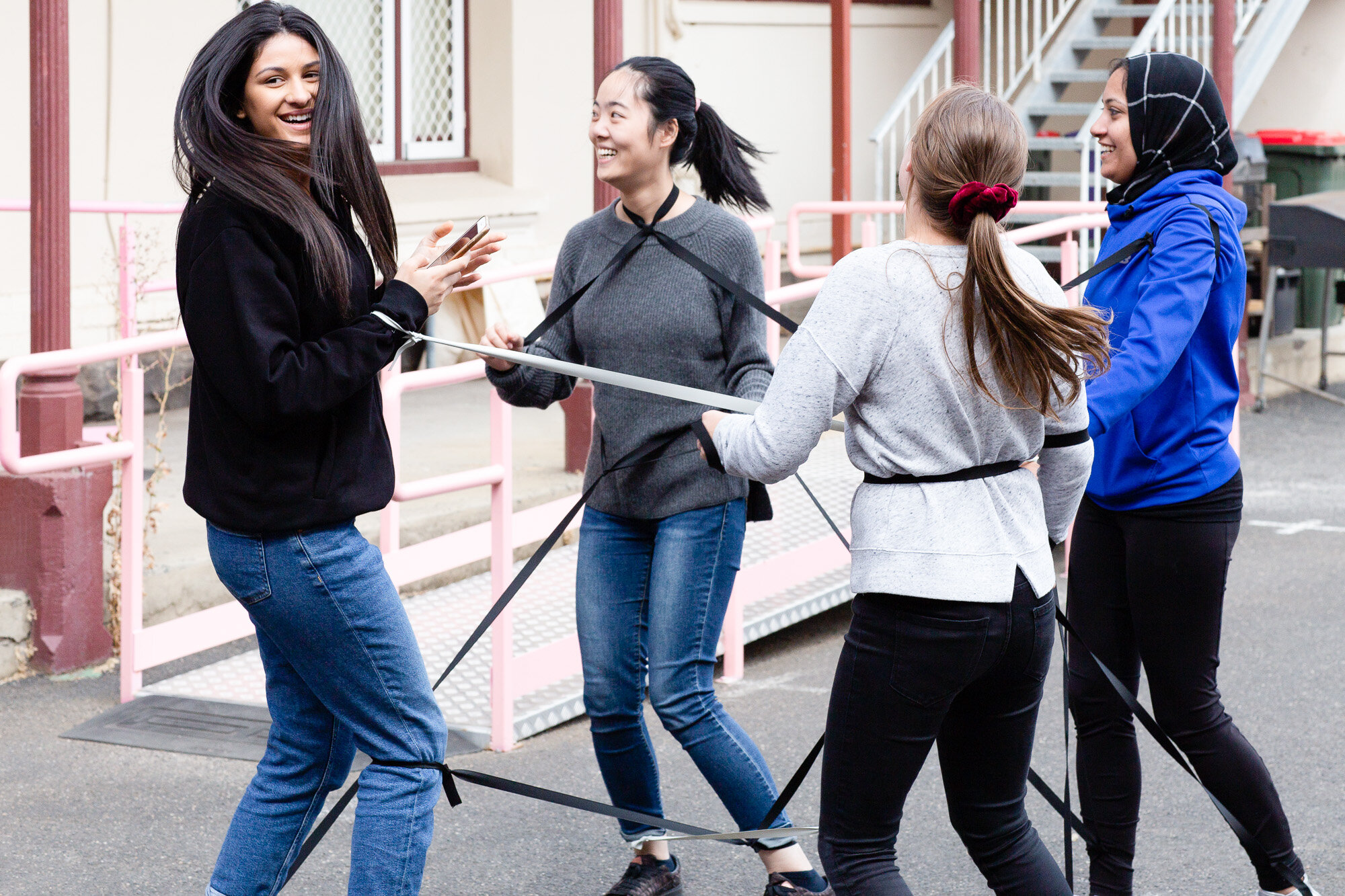
testing ideas for Everyday Choreography- Siteworks
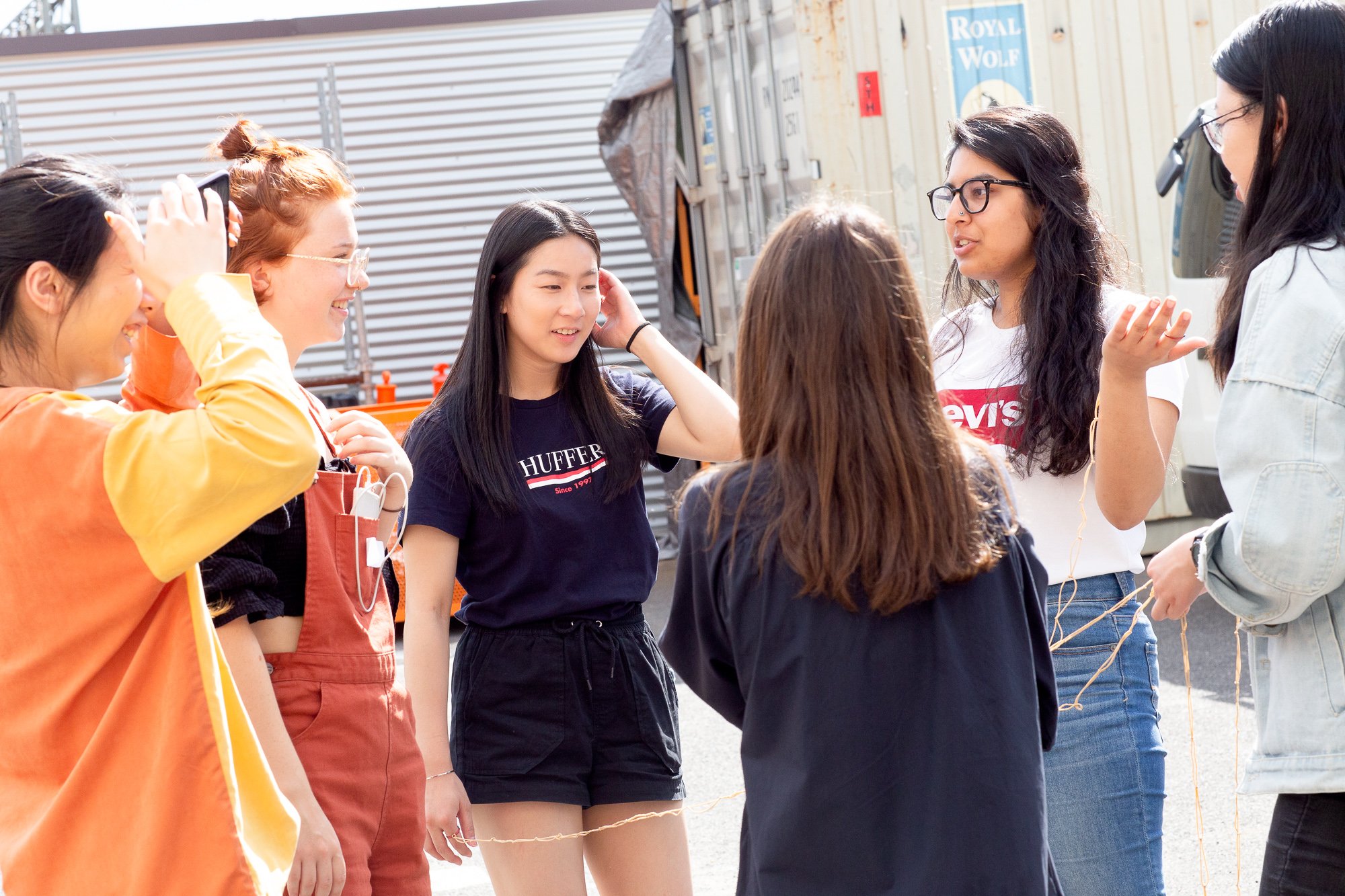
ideas in progress
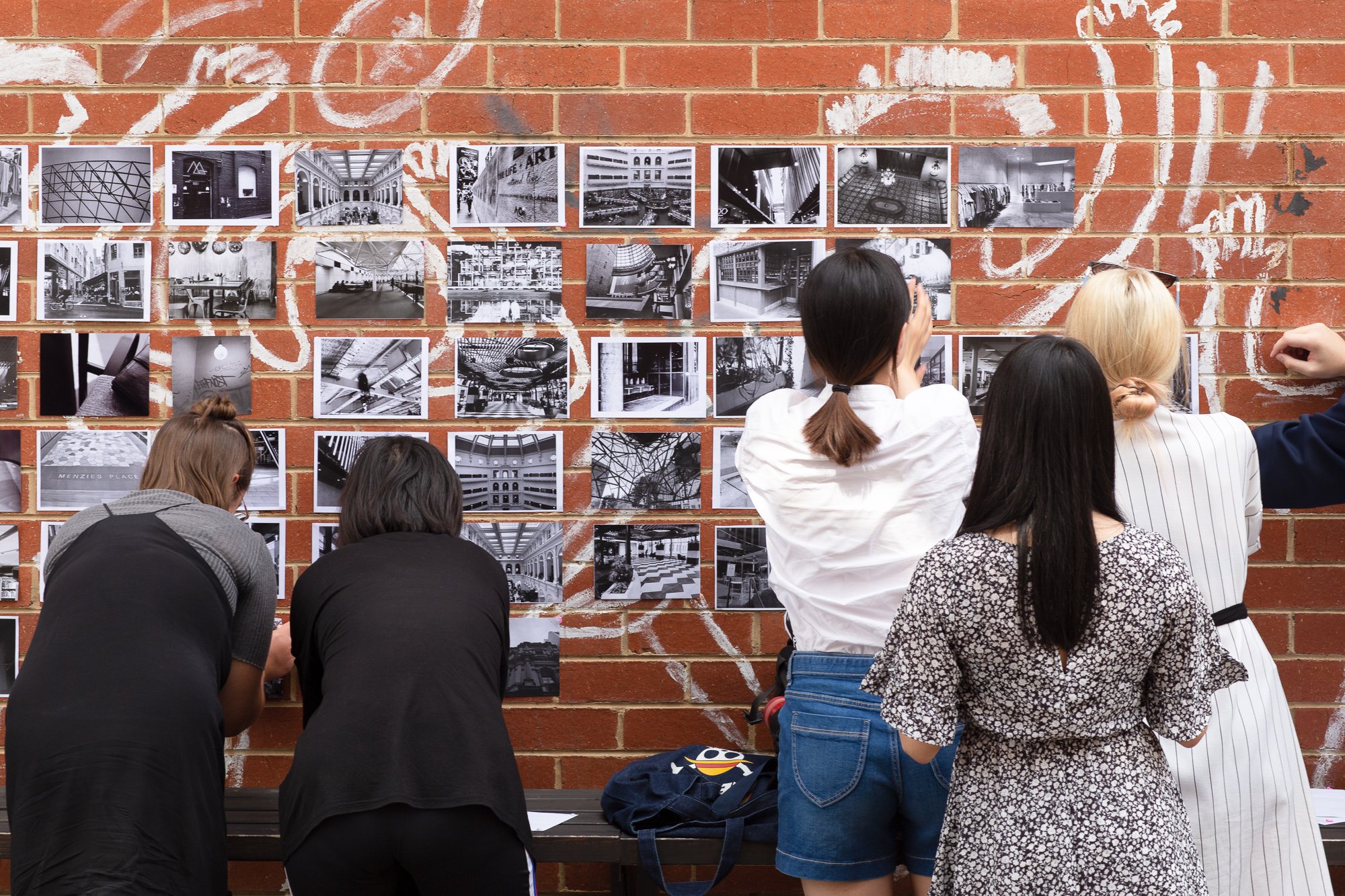
collective exhibition installation
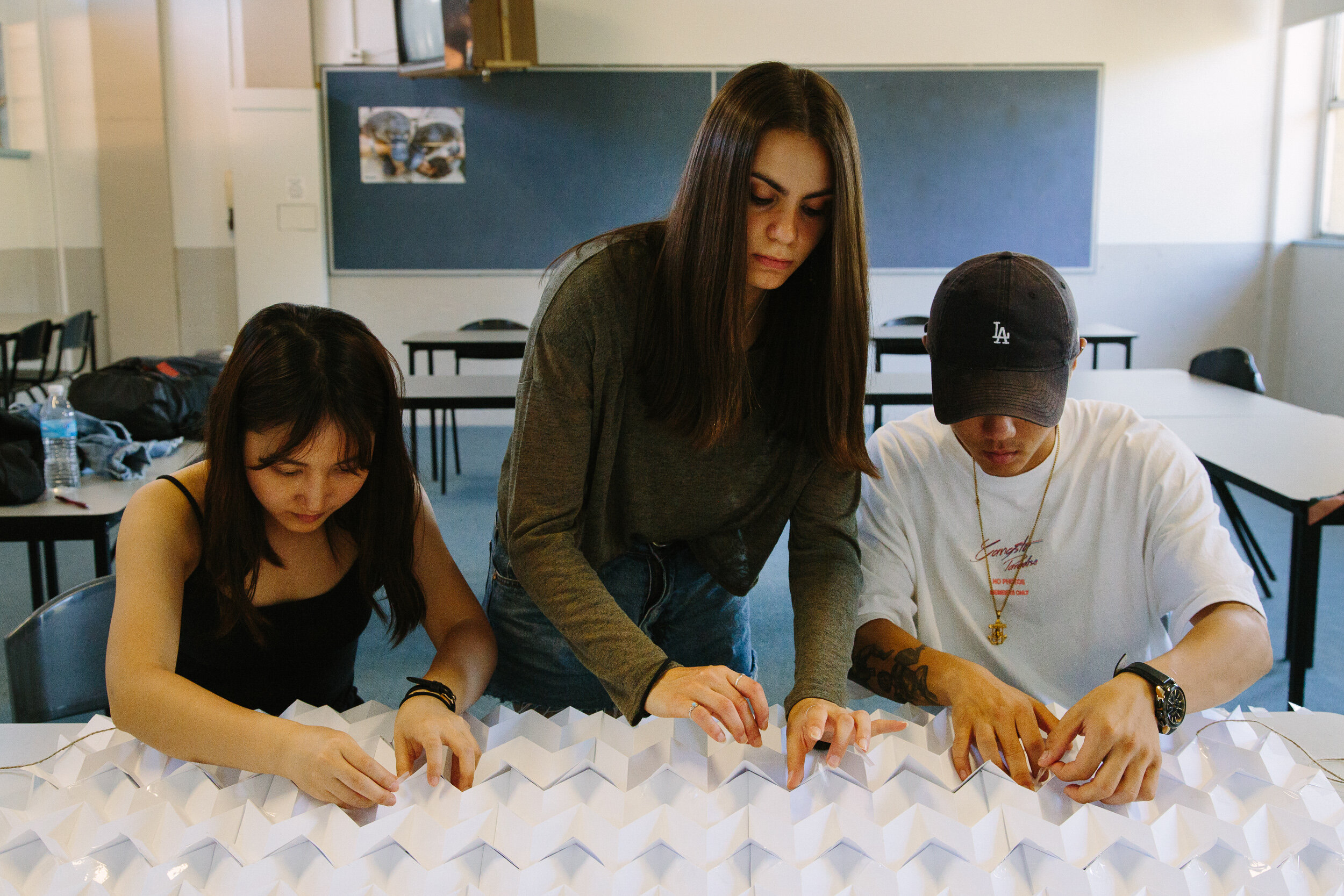
students working on Fold to Form - week 2
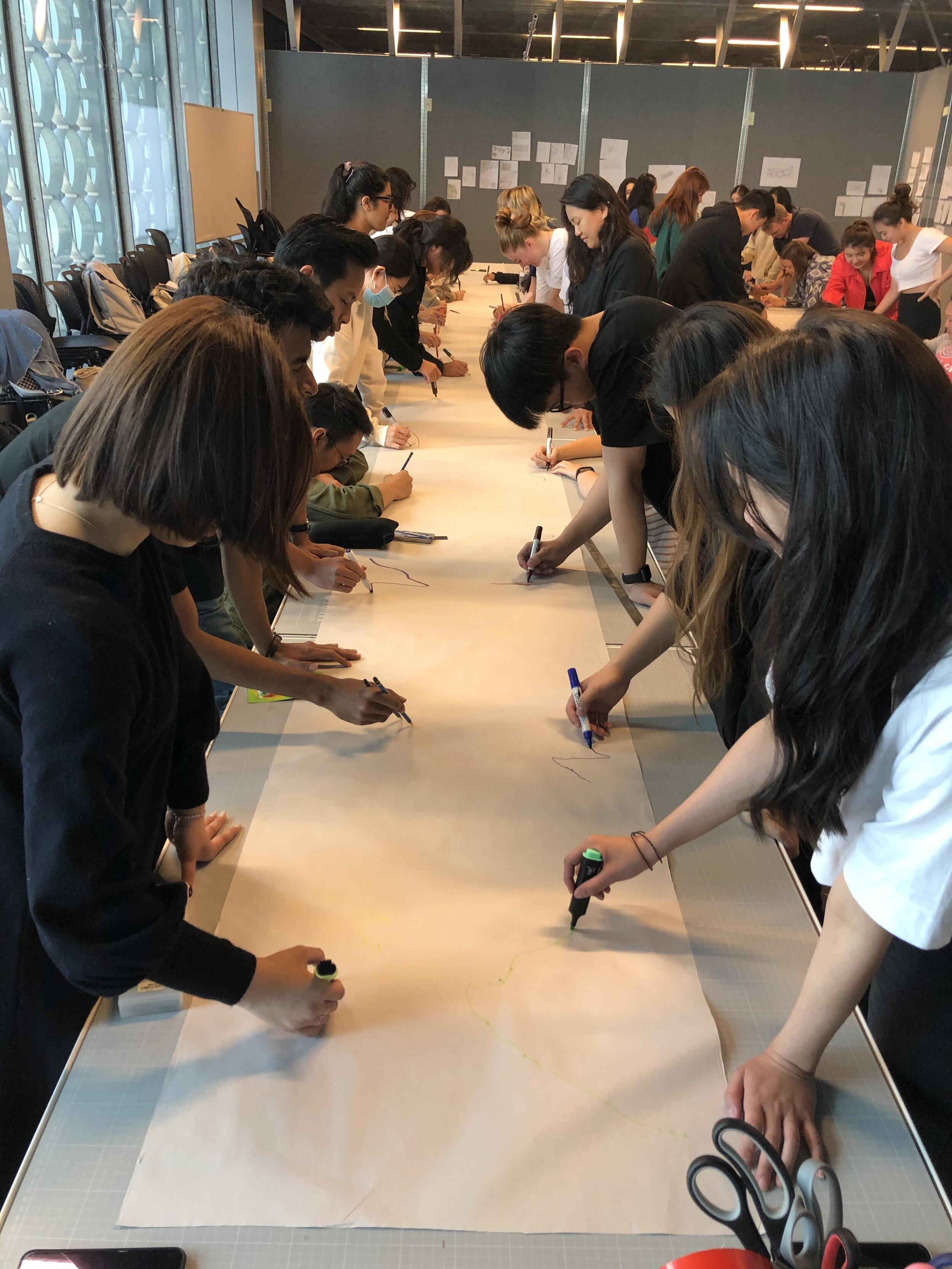
Collective drawing- attuning spatial senses - week 3
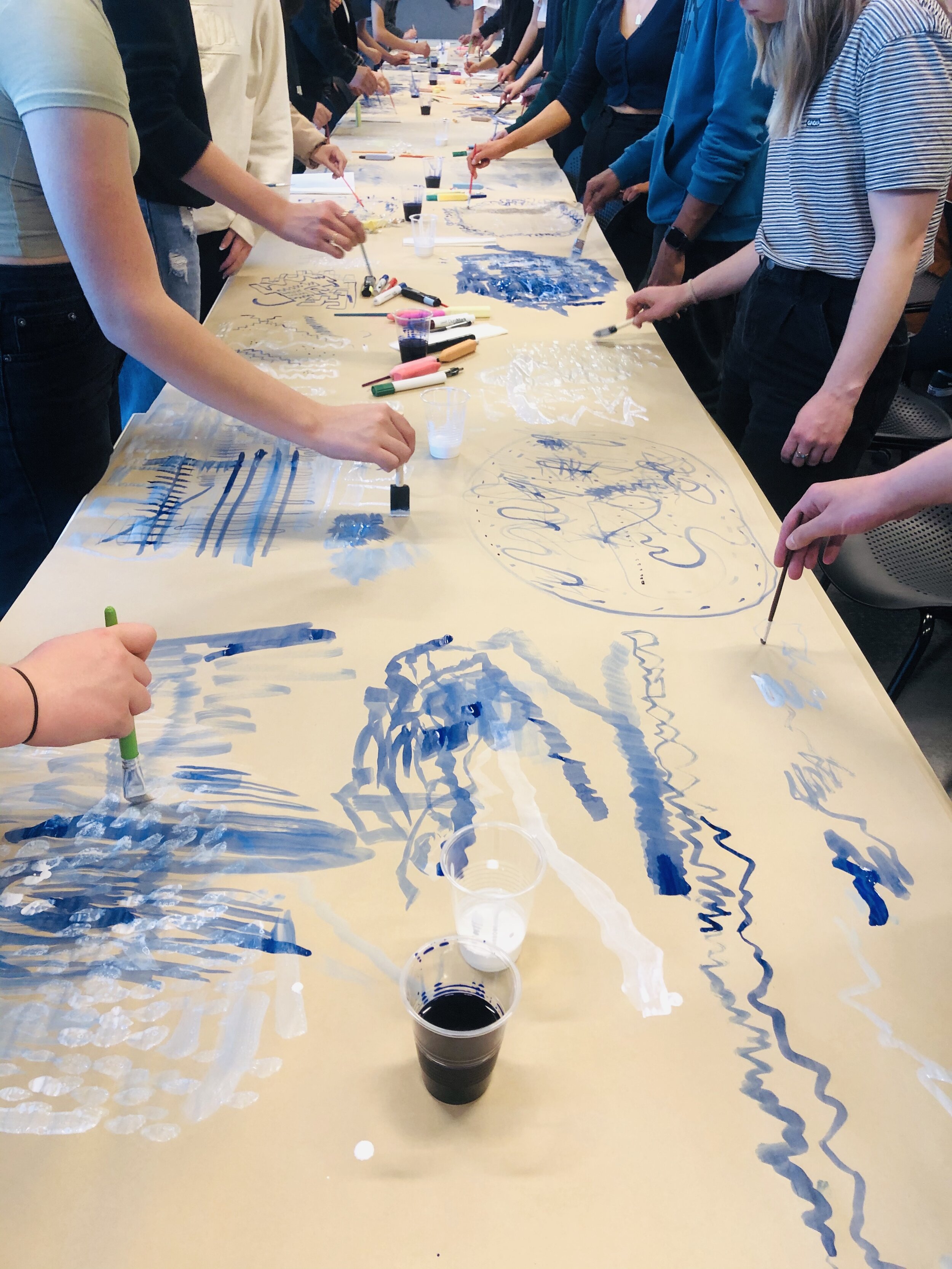
Collective drawing- attuning spatial senses - week 3
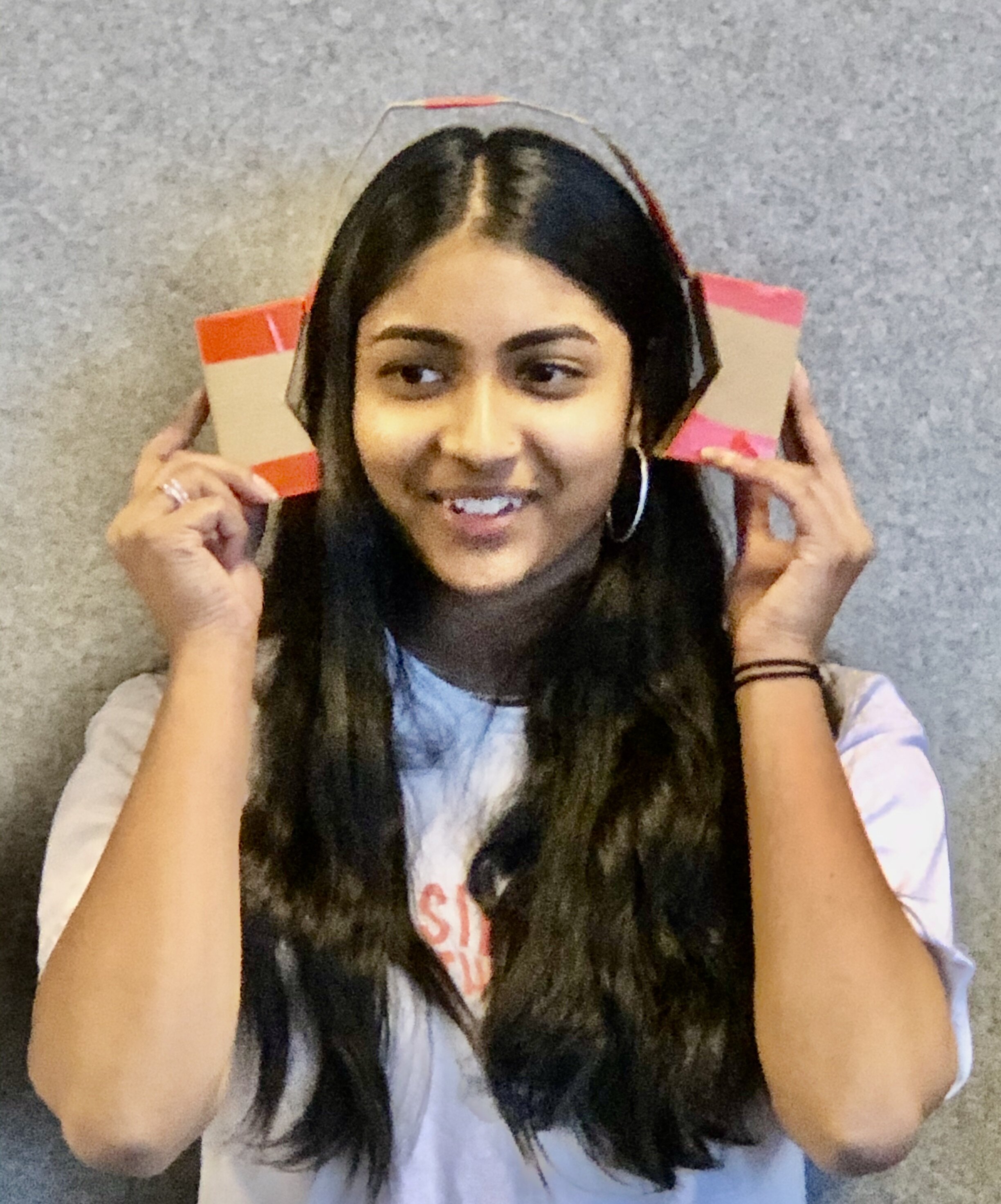
Amplifying the senses- 1 hour in-class response Week 3
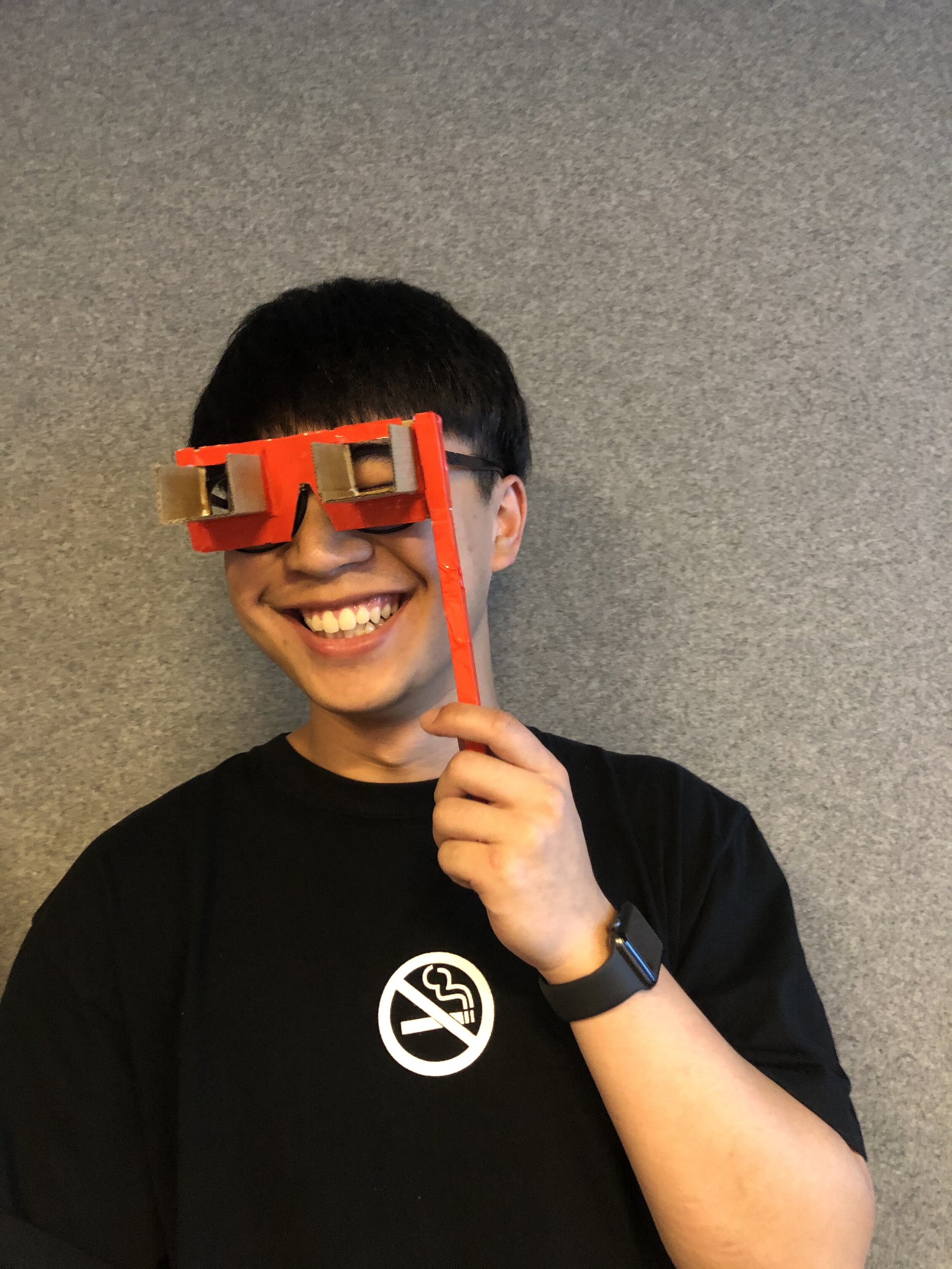
Amplifying the senses- 1 hour in class response Week 3
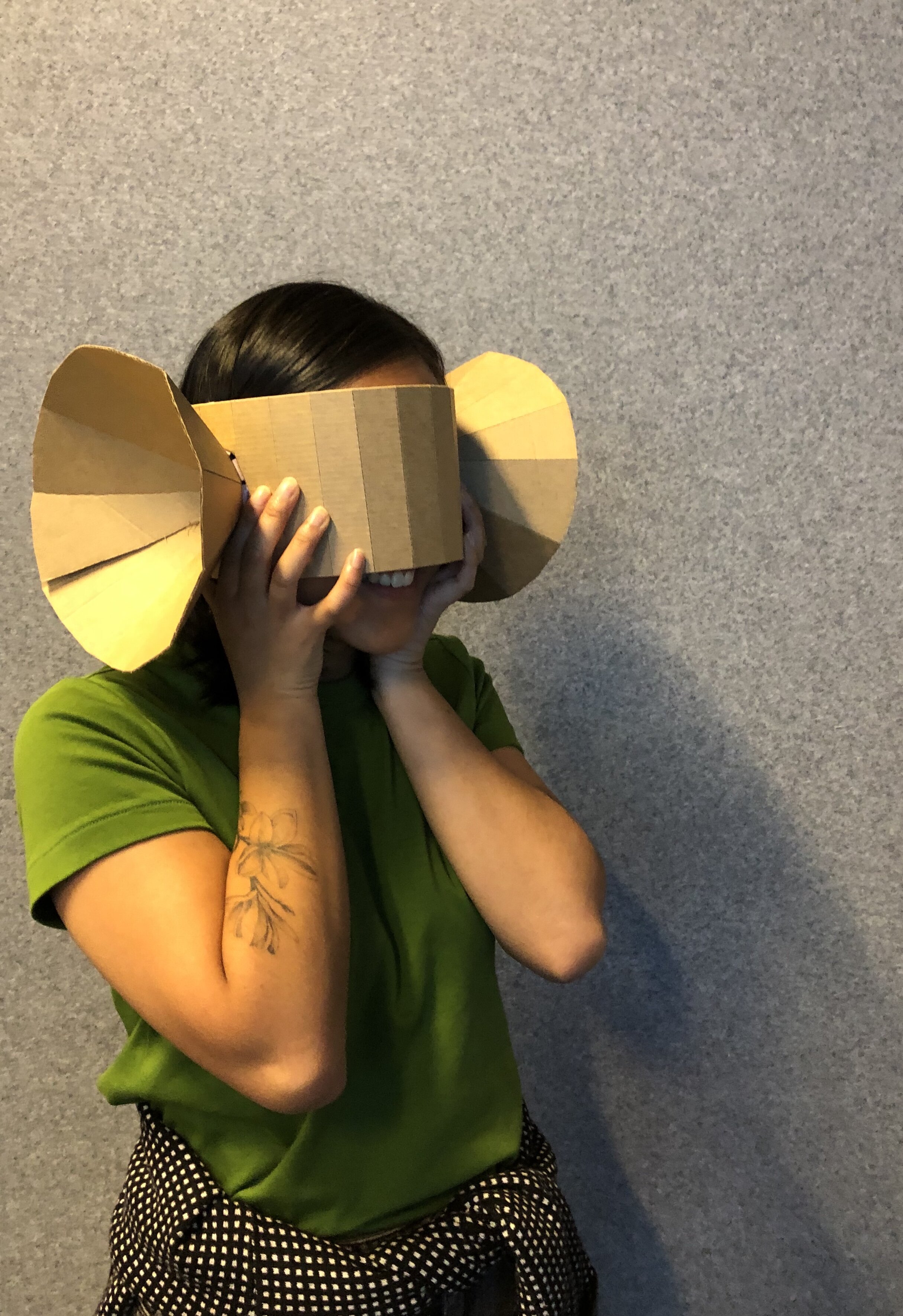
Amplifying the senses- 1 hour in class response Week 3
Prompts/Briefs for workshops held in the first 3 weeks of first year:
Everyday Choreography: Exploring how we experience space through performativity and movement.
Performativity is the acting out of everyday movements and gestures. It is one way in which we construct our sense of self. For example, consider the way you walk: we each have a unique stride, gait, footfall, and rhythm. Frequently, our spatial environments and the objects within them propose particular ways in which our bodies move. These ideas are crucial to the design and inhabitation of interiors. Beginning in groups, you will observe and document the human body as a site and explore the relationships between bodies. From there you will work individually to explore the movement of a body in relation to a specific context. This will lead to the design and crafting of a wearable apparatus that responds to your chosen movement. Understanding the close relationships between people and spaces is a key skill in the practice of interior design. This project will develop your observational skills of how people interact with each other and with objects in space. It is a chance to practice transforming your observations and ideas into a design at a manageable scale. By using a process-based approach you will open up new ways of thinking and practicing. You will be working through an iterative design process. This will include: group work, material experimentation, testing, photographing, drawing, giving peer feedback, making mistakes, speculating, playing, re-iterating. Students have a $10 budget for materials.
'Surroundings' is concerned with how we perceive interiors, and creating or revealing unseen or hidden readings of interior space.
Surroundings will build on the in-class workshop sensing spaces, visualising senses, and amplifying senses. This project asks you to undertake the close observation and documentation, research, and iterative testing process as well as video, photography, communication skill to explore and capture a compelling public interior in two different ways. You will draw on your developing understanding of how the body is involved in sensing space and produce a transformation that reveals another hidden or non-visible experience of the existing interior through in-camera effects, lighting, mirrors, scenography, staging, and other non-digital and temporary or ephemeral ways of creating a transformation in the way space is perceived. This project will develop your confidence and abilities in understanding and communicating immersive interior experiences, and consequently your ability to incorporate non-visual qualities into your interior design approaches. You will also develop an understanding of scenographic and analog spatial and camera technologies, installations, and spatial interventions that can produce transformative interior experiences.
Passing Time introduces you to thinking more carefully about time in space and in the design process and introduces you to techniques of photography, drawing, and model making.
Passing Time is made up of three sections - Drawing Duration / Over and Over / Accumulation. In Drawing Duration, you will use drawing to look closely at how time manifests in interior space and its effect on material, perception, and atmosphere. Over and Over explores how interior design is not limited to the inside of a building but continually formed in relation to technologies and social, economic, and cultural forces. Interior design attends to the relationship between people and between people and their environments across a range of scales, mediums, and techniques. Over and over asks you to identify interiors that surround you that are not enclosed by four walls and then draw and photograph them 'over and over' to capture and communicate the qualities that make them interior. Over time everything accumulates (dust, experience, knowledge, belongings... and more) Accumulation uses photography and drawing to evidence the accumulation of understanding and to accumulate a collection of work that will then become part of a larger collaboration.